The objective was to explore variations of temperature distribution and coagulation zone size computed by a two-compartment radiofrequency ablation (RFA) model when including simultaneously reversible changes in the tissue electrical conductivity (σ) due to temperature and irreversible changes due to thermal coagulation. Two-compartment (tumor and healthy tissue) models were built and simulated. Reversible change of σ was modeled by a piecewise function characterized by increments of +1.5%/℃ up to 100 ℃, and a 100 times smaller value from 100 ℃ onwards. Irreversible changes of σ were modeled using an Arrhenius model. We assumed that both tumor and healthy tissue had a different initial σ value (as suggested by the experimental data in the literature) and tended towards a common value as thermal damage progressed (necrotized tissue). We modeled a constant impedance protocol based on 90 V pulses voltage and three tumor diameters (2, 3 and 4 cm). Computer simulations showed that the differences between both models were only 0.1 and 0.2 cm for axial and transverse diameters, respectively, and this small difference was reflected in the similar temperature distributions computed by both models. In view of the available experimental data on changes of electrical conductivity in tumors and healthy tissue during heating, our results suggest that irreversible changes in electrical conductivity do not have a significant impact on coagulation zone size in two-compartment RFA models.
1.
Introduction
In convex function theory, the classical Hermite-Hadamard inequality is one of the most well-known inequalities with geometrical interpretation, and it has a wide range of applications, see [1,2].
Let S:K→R+ be a convex function on a convex set K and ρ,ς∈K with ρ≠ς. Then,
In [3], Fejér looked at the key extensions of HH-inequality which is known as Hermite-Hadamard-Fejér inequality (HH-Fejér inequality).
Let S:K→R+ be a convex function on a convex set K and ρ,ς ∈K with ρ≠ς. Then,
If D(ϖ)=1, then we obtain (1) from (2). We should remark that Hermite-Hadamard inequality is a refinement of the idea of convexity, and it can be simply deduced from Jensen's inequality. In recent years, the Hermite-Hadamard inequality for convex functions has gotten a lot of attention, and there have been a lot of improvements and generalizations examined. Sarikaya [4] proved the Hadamard type inequality for coordinated convex functions such that
Let G:Δ→R+ be a coordinate convex function on Δ=[ς,ρ]×[μ,ν]. If G is double fractional integrable, then following inequalities hold:
If α=1, then we obtain the following Dragomir inequality [5] on coordinates:
For more details related to inequalities, see [6,7,8,9] and reference therein.
Interval analysis, on the other hand, is a well-known example of set-valued analysis, which is the study of sets in the context of mathematical analysis and general topology. It was created as a way of dealing with the interval uncertainty that can be found in many mathematical or computer models of deterministic real-world phenomena. Archimede's method, which is used to calculate the circumference of a circle, is an old example of an interval enclosure. Moore [10], who is credited with being the first user of intervals in computational mathematics, published the first book on interval analysis in 1966. Following the publication of his book, a number of scientists began to research the theory and applications of interval arithmetic. Interval analysis is now a helpful technique in a variety of fields that are interested in ambiguous data because of its applicability. Computer graphics, experimental and computational physics, error analysis, robotics, and many more fields have applications.
Furthermore, in recent years, numerous major inequalities (Hermite-Hadamard, Ostrowski and others) have been addressed for interval-valued functions. Chalco-Cano et al. used the Hukuhara derivative for interval-valued functions to construct Ostrowski type inequalities for interval-valued functions in [11,12,13,14]. For interval-valued functions, Román-Flores et al. developed Minkowski and Beckenbach's inequality in [15]. For fuzzy interval-valued function, Khan et al. [16,17,18] derived some new versions of Hermite-Hadamard type inequalities and proved their validity with the help of non-trivial examples. Moreover, Khan et al. [19,20] discussed some novel types of Hermite-Hadamard type inequalities in fuzzy-interval fractional calculus and proved that many classical versions are special cases of these inequalities. Recently, Khan et al. [21] introduced the new class of convexity in fuzzy-interval calculus which is known as coordinated convex fuzzy-interval-valued functions and with the support of these classes, some Hermite-Hadamard type inequalities are obtained via newly defined fuzzy-interval double integrals. We encourage readers to [22,23,24,25,26,27,28,29,30,31,32,33,34,35,36,37,38,39,40,41,42,43,44,45,46,47,48,49,50,51,52,53,54] for other related results.
The following is an overview of the paper's structure. Section 2 recalls some preliminary notions and definitions. Moreover, some properties of introduced coordinated LR-convex IVF are also discussed. Section 3 presents some Hermite-Hadamard type inequalities for coordinated LR-convex IVF. With the help of this class, some fractional integral inequalities are also derived for the coordinated LR-convex IVF and for the product of two coordinated LR-convex IVFs. The fourth section, Conclusions and Future Work, brings us to a close.
2.
Preliminaries and known results
Let R be the set of real numbers and RI be the space of all closed and bounded intervals of R, such that U∈RI is defined by
If U∗=U∗, then U is said to be degenerate. If U∗≥0, then [U∗,U∗] is called positive interval. The set of all positive interval is denoted by R+I and defined as R+I={[U∗,U∗]:[U∗,U∗]∈RIandU∗≥0}.
Let ϱ∈R and ϱU be defined by
Then, the Minkowski difference D−U, addition U+D and U×D for U,D∈RI are defined by
and
The inclusion "⊇" means that
U⊇D if and only if, [U∗,U∗]⊇[D∗,D∗], and if and only if
Remark 1. [36] (ⅰ) The relation "≤p" is defined on RI by
for all [D∗,D∗],[U∗,U∗]∈RI, and it is a pseudo order relation. The relation [D∗,D∗]≤p[U∗,U∗] coincident to [D∗,D∗]≤[U∗,U∗] on RI when it is "≤p"
(ⅱ) It can be easily seen that "≤p" looks like "left and right" on the real line R, so we call "≤p" is "left and right" (or "LR" order, in short).
For [D∗,D∗],[U∗,U∗]∈RI, the Hausdorff-Pompeiu distance between intervals [D∗,D∗] and [U∗,U∗] is defined by
It is familiar fact that (RI,d) is a complete metric space.
Theorem 1. [10] If G:[μ,ν]⊂R→RI is an I-V-F given by (x) [G∗(x),G∗(x)], then G is Riemann integrable over [μ,ν] if and only if, G∗ and G∗ both are Riemann integrable over [μ,ν] such that
The collection of all Riemann integrable real valued functions and Riemann integrable I-V-F is denoted by R[μ,ν] and TR[μ,ν], respectively.
Definition 1. [31,33] Let G:[μ,ν]→RI be interval-valued function and G∈TR[μ,ν]. Then interval Riemann-Liouville-type integrals of G are defined as
where α>0 and Γ is the gamma function.
Theorem 2. [20] Let G:[ς,ρ]→RI+ be a LR-convex I-V.F such that G(y)=[G∗(y),G∗(y)] for all y∈[ς,ρ]. If G∈L([ς,ρ],R+I), then
Theorem 3. [20] Let G,S:[ς,ρ]→R+I be two LR-convex I-V.Fs such that G(x)=[G∗(x),G∗(x)] and S(x)=[S∗(x),S∗(x)] for all x∈[ς,ρ]. If G×S∈L([ς,ρ],R+I) is fuzzy Riemann integrable, then
and
where M(ς,ρ)=G(ς)×S(ς)+G(ρ)×S(ρ), N(ς,ρ)=G(ς)×S(ρ)+G(ρ)×S(ς),
and M(ς,ρ)=[M∗(ς,ρ),M∗(ς,ρ)] and N(ς,ρ)=[N∗(ς,ρ),N∗(ς,ρ)].
Note that, the Theorem 1 is also true for interval double integrals. The collection of all double integrable I-V-F is denoted TOΔ, respectively.
Theorem 4. [35] Let Δ=[ς,ρ]×[μ,ν]. If G:Δ→RI is interval-valued doubl integrable (ID-integrable) on Δ. Then, we have
Definition 2. [36] Let G:Δ→R+I and G∈TOΔ. The interval Riemann-Liouville-type integrals Iα,βμ+,ς+,Iα,βμ+,ρ−, Iα,βν−,ς+,Iα,βν−,ρ− of G order α,β>0 are defined by
Definition 3. [38] The I-V.F G:Δ→R+I is said to be coordinated LR-convex I-V.F on Δ if
for all (μ,ν),(ς,ρ)∈Δ, and τ,s∈[0,1]. If inequality (21) is reversed, then G is called coordinate LR-concave I-V.F on Δ.
Lemma 1. [38] Let G:Δ→R+I be an coordinated I-V.F on Δ. Then, G is coordinated LR-convex I-V.F on Δ, if and only if there exist two coordinated LR-convex I-V.Fs Gx:[ς,ρ]→R+I, Gx(w)=G(x,w) and Gy:[μ,ν]→R+I, Gy(z)=G(z,y).
Theorem 5. [38] Let G:Δ→R+I be a I-V.F on Δ such that
for all (x,ϖ)∈Δ. Then, G is coordinated LR-convex I-V.F on Δ, if and only if, G∗(x,ϖ) and G∗(x,ϖ) are coordinated convex functions.
Example 1. We consider the I-V.Fs G:[0,1]×[0,1]→R+I defined by,
Then, for each θ∈[0,1], we have G(x)=[2θ(6+ex)(6+eϖ),(4+2θ)(6+ex)(6+eϖ)]. Since end point functions G∗((x,ϖ),θ), G∗((x,ϖ),θ) are coordinate concave functions for each θ∈[0,1]. Hence S(x,ϖ) is coordinate LR-concave I-V.F.
From Lemma 1, we can easily note that each LR-convex I-V.F is coordinated LR-convex I-V.F. But the converse is not true.
Remark 2. If one takes G∗(x,ϖ)=G∗(x,ϖ), then G is known as coordinated function if G satisfies the coming inequality
is valid which is defined by Dragomir [5]
Let one takes G∗(x,ϖ)≠G∗(x,ϖ), where G∗(x,ϖ) is affine function and G∗(x,ϖ) is a concave function. If coming inequality,
is valid, then G is named as coordinated IVF which is defined by Zhao et al. [37, Definition 2 and Example 2]
3.
Main results
In this section, we shall continue with the following fractional HH-inequality for coordinated LR-convex I-V.Fs, and we also give fractional HH-Fejér inequality for coordinated LR-convex I-V.F through fuzzy order relation.
Theorem 6. Let G:Δ→R+I be a coordinate LR-convex I-V.F on Δ such that G(x,y)=[G∗(x,y),G∗(x,y)] for all (x,y)∈Δ. If G∈TOΔ, then following inequalities holds:
If G(x) coordinated LR-concave I-V.F, then
Proof. Let G:[μ,ν]→R+I be a coordinated LR-convex I-V.F. Then, by hypothesis, we have
By using Theorem 5, we have
By using Lemma 1, we have
and
From (25) and (26), we have
and
It follows that
and
Since G(x,.) and G(.,y), both are coordinated LR-convex-IVFs, then from inequality (14), inequalities (27) and (28) we have
and
Since Gx(w)=G(x,w), the inequality (29) can be written as
That is
Multiplying double inequality (31) by α(ν−x)α−12(ν−μ)α and integrating with respect to x over [μ,ν], we have
Again multiplying double inequality (31) by α(x−μ)α−12(ν−μ)α and integrating with respect to x over [μ,ν], we have
From (32), we have
From (33), we have
Similarly, since Gy(z)=G(z,y) then, from (34) and (35), (30) we have
and
After adding the inequalities (46), (35), (36) and (37), we will obtain as resultant second, third and fourth inequalities of (23).
Now, from left part of inequality (14), we have
and
Summing the inequalities (38) and (39), we obtain the following inequality:
this is the first inequality of (23).
Now, from right part of inequality (14), we have
Summing inequalities (41), (42), (43) and (44), and then taking multiplication of the resultant with 14, we have
This is last inequality of (23) and the result has been proven.
Remark 3. If one to take α=1 and β=1, then from (23), we achieve the coming inequality, see [38]:
Let one takes G∗(x,y) is an affine function and G∗(x,y) is concave function. If G∗(x,y)≠G∗(x,y), then from Remark 2 and (24), we acquire the coming inequality, see [31]:
Let one takes α=1 and β=1, G∗(x,y) is an affine function and G∗(x,y) is concave function. If G∗(x,y)≠G∗(x,y), then Remark 2 and from (24), we acquire the coming inequality, see [37]:
Example 2. We consider the I-V-Fs G:[0,1]×[0,1]→R+I defined by,
Since end point functions G∗(x,y), G∗(x,y) are convex functions on coordinate, then G(x,y) is convex I-V-F on coordinate. Then for α=1 and β=1, we have
That is
Hence, Theorem 3.1 has been verified
Next both results obtain Hermite-Hadamard type inequalities for the product of two coordinate LR-convex I-V.Fs
Theorem 7. Let G,S:Δ→R+I be a coordinate LR-convex I-V.Fs on Δ such that G(x,y)=[G∗(x,y),G∗(x,y)] and S(x,y)=[S∗(x,y),S∗(x,y)] for all (x,y)∈Δ. If G×S∈TOΔ, then following inequalities holds:
If G and S both are coordinate LR-concave I-V.Fs on Δ, then above inequality can be written as
Where
and K(μ,ν,ς,ρ), ˜L(μ,ν,ς,ρ), M(μ,ν,ς,ρ) and N(μ,ν,ς,ρ) are defined as follows:
Proof. Let G and S both are coordinated LR-convex I-V.Fs on [μ,ν]×[ς,ρ]. Then
and
Since G and S both are coordinated LR-convex I-V.Fs, then by Lemma 1, there exist
Since Gx, and Sx are I-V.Fs, then by inequality (15), we have
That is
Multiplying double inequality (51) by α(ν−x)α−12(ν−μ)α and integrating with respect to x over [μ,ν], we get
Again, multiplying double inequality (51) by α(x−μ)α−12(ν−μ)α and integrating with respect to x over [μ,ν], we gain
Summing (52) and (53), we have
Now, again with the help of integral inequality (15) for first two integrals on the right-hand side of (54), we have the following relation
And
From (55)–(58), inequality (54) we have
Hence, the result has been proven.
Remark 4. If one to take α=1 and β=1, then from (49), we achieve the coming inequality, see [38]:
Let one takes G∗(x,y) is an affine function and G∗(x,y) is concave function. If G∗(x,y)≠G∗(x,y), then by Remark 2 and (50), we acquire the coming inequality, see [36]:
Let one takes G∗(x,y) is an affine function and G∗(x,y) is concave function. If G∗(x,y)≠G∗(x,y), then by Remark 2 and (50), we acquire the coming inequality, see [37]:
If G∗(x,y)=G∗(x,y) and S∗(x,y)=S∗(x,y), then from (49), we acquire the coming inequality, see [39]:
Theorem 8. Let G,S:Δ→R+I be a coordinate LR-convex I-V.F on Δ such that G(x,y)=[G∗(x,y),G∗(x,y)] and S(x,y)=[S∗(x,y),S∗(x,y)] for all (x,y)∈Δ. If G×S∈TOΔ, then following inequalities holds:
If G and S both are coordinate LR-concave I-V.Fs on Δ, then above inequality can be written as
Where K(μ,ν,ς,ρ), L(μ,ν,ς,ρ), M(μ,ν,ς,ρ) and N(μ,ν,ς,ρ) are given in Theorem 7.
Proof. Since G,S:Δ→R+I be two LR-convex I-V.Fs, then from inequality (16), we have
and
Adding (73) and (74), and then taking the multiplication of the resultant one by 2, we obtain
Again, with the help of integral inequality (16) and Lemma 1 for each integral on the right-hand side of (67), we have
And
and
From inequalities (68) to (79), inequality (67) we have
Again, with the help of integral inequality (15) and Lemma 1, for each integral on the right-hand side of (80), we have
From (77) to (84), (80) we have
This concludes the proof of Theorem 8 result has been proven.
Remark 5. If we take \alpha = 1 and \beta = 1 , then from (63), we achieve the coming inequality, see [38]:
Let one takes {\mathfrak{G}}_{\mathfrak{*}}\left(\mathcal{x}, \mathit{y}\right) is an affine function and {\mathfrak{G}}^{\mathfrak{*}}\left(\mathcal{x}, \mathit{y}\right) is convex function. If {\mathfrak{G}}_{\mathfrak{*}}\left(\mathcal{x}, \mathit{y}\right)\ne {\mathfrak{G}}^{\mathfrak{*}}\left(\mathcal{x}, \mathit{y}\right) , then from Remark 2 and (64), we acquire the coming inequality, see [37]:
Let one takes {\mathfrak{G}}_{\mathfrak{*}}\left(\mathcal{x}, \mathit{y}\right) is an affine function and {\mathfrak{G}}^{\mathfrak{*}}\left(\mathcal{x}, \mathit{y}\right) is convex function. If {\mathfrak{G}}_{\mathfrak{*}}\left(\mathcal{x}, \mathit{y}\right)\ne {\mathfrak{G}}^{\mathfrak{*}}\left(\mathcal{x}, \mathit{y}\right) , then from Remark 2 and (64) we acquire the coming inequality, see [36]:
If we take {\mathfrak{G}}_{\mathfrak{*}}\left(\mathcal{x}, \mathit{y}\right) = {\mathfrak{G}}^{\mathfrak{*}}\left(\mathcal{x}, \mathit{y}\right) and {\mathfrak{S}}_{\mathfrak{*}}\left(\mathcal{x}, \mathit{y}\right) = {\mathfrak{S}}^{\mathfrak{*}}\left(\mathcal{x}, \mathit{y}\right) , then from (63), we acquire the coming inequality, see [39]:
4.
Conclusions
In this study, with the help of coordinated LR-convexity for interval-valued functions, several novel Hermite-Hadamard type inequalities are presented. It is also demonstrated that the conclusions reached in this study represent a possible extension of previously published equivalent results. Similar inequalities may be discovered in the future using various forms of convexities. This is a novel and intriguing topic, and future study will be able to find equivalent inequalities for various types of convexity and coordinated m-convexity by using different fractional integral operators.
Acknowledgments
The authors would like to thank the Rector, COMSATS University Islamabad, Islamabad, Pakistan, for providing excellent research. All authors read and approved the final manuscript. This work was funded by Taif University Researchers Supporting Project number (TURSP-2020/345), Taif University, Taif, Saudi Arabia.
Conflict of interest
The authors declare that they have no competing interests.











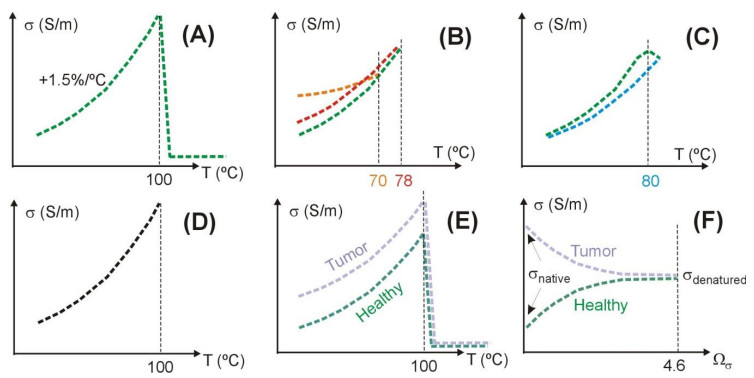
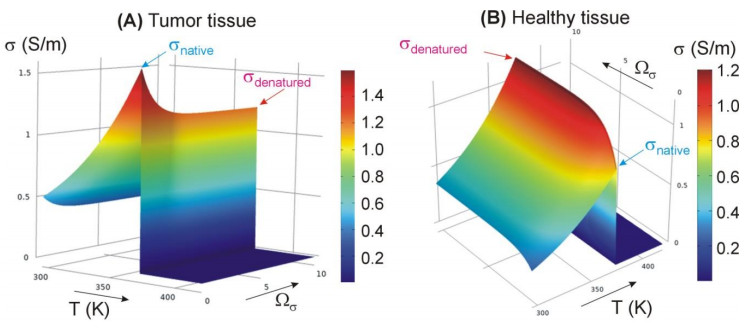
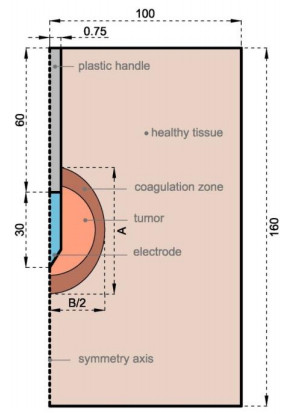
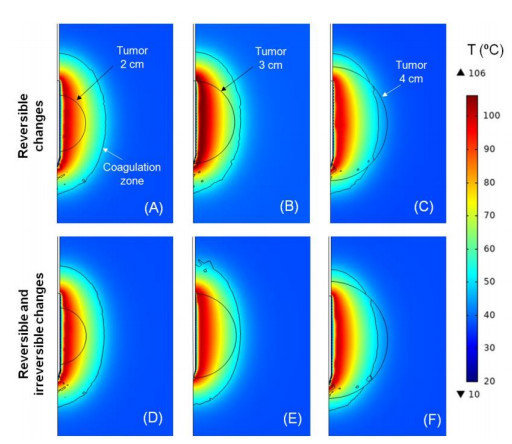
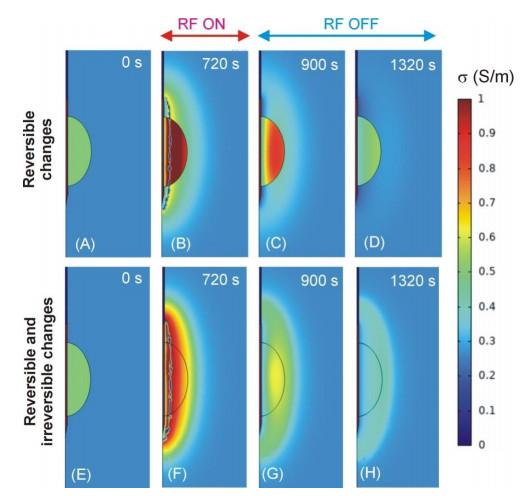


 DownLoad:
DownLoad: